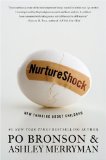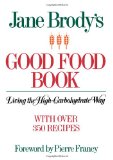Parents and Caregivers, We are thrilled to unveil our latest initiative – Head to Heart…
Nurture Shock: Chapter One – The Inverse Power of Praise

Chapter One – The Inverse Power of Praise
For the first time this spring the Seattle area had three amazing days of sunshine and warmth and I’ve been spending every minute of it outside in the garden. But now I’m back in my office thinking about my prior experiences with book groups. I was generally the one who would wait till the last couple of days before the book group meeting and speed read the book – clearly not the most enjoyable way to read a book or participate in a discussion. Last year I did Oprah’s book club on Eckhart Tolle’s book, A New Earth and I really enjoyed reading and processing one chapter at a time. Since the chapters in Nurture Shock seem to stand alone I thought I would try something different. It’s my hope that this approach will give you a chance to digest each chapter at a pace that works well with your schedule (and mine!).
Now to Chapter One – The Inverse Power of Praise. Praise and I have had a love hate relationship for as long as I can remember. Starting when I was a child I remember being constantly praised by my parents and their peers for my looks, my grades and my athleticism. Truthfully, I didn’t deserve half of it. And what I noticed as I became an adult and entered the work force was that I thought of myself as more capable than I really was. The praise I received put me on a pedestal that didn’t have a solid foundation – almost as if the foundation was made of glass that could shatter at any given moment.
As a parent I have really struggled with praise and encouragement. As you might expect, given my upbringing, praise just rolls off my tongue – but adding those specific encouraging words has been my biggest challenge. Sometimes it was so hard that it felt like I was going inside my mouth to pull out the words. But this is where it gets confusing for me. Our oldest daughter was just like Thomas, the example in the book – she was identified as gifted in 3rd grade. At the advice of her teachers we enrolled her in the John’s Hopkins program for gifted students and she continued to score in the top percentile thru 5th grade. But we also noticed the same discrepancy – she was at the ‘top of the charts, but lacked the confidence to tackle routine school challenges’. One of her teachers in middle school described it beautifully – because she never had to work hard in elementary school she lacked the work study skills to tackle challenging work in middle school.
Of course we praised her. We were so proud of her accomplishments and her innate ability. But after reading the chapter and digesting Dweck’s research results I agree with the authors: “Emphasizing effort gives a child a variable that they can control . . . . They come to see themselves as in control of their success. Emphasizing natural intelligence takes it out of the child’s control, and it provides no good recipe for responding to a failure.”
In my case praise felt shallow and without substance – my parents emphasized an innate talent that just wasn’t there. But because of that I went on to believe I was capable of more than I probably was and even today I continue to take on challenges that push me beyond my comfort zone (writing this blog is a perfect example). And I wonder . . . do I keep trying because I don’t have the innate ability and I have learned that effort equals results? Or am I still trying to live up to my parents’ expectations? (this could be a Dr. Phil episode) I do know that understanding the implications of this research has helped me better understand my daughter and helped me to realistically re-frame the way I talk with my clients about praise.
So, there you have it, my impressions of Chapter One. How did you react to this chapter?
I look forward to hearing from you,
Sally
This week’s Recipe
Last week I suggested the Poodletini. This week felt more like comfort food. Took me awhile to decide, but I finally landed on my daughter’s favorite breakfast – and it’s been her favorite since she was two years old! This is our variation on Jane Brody’s Cottage Cheese Toasties from her Good Food Book.
Sarah’s Favorite Cottage Cheese Toasties
Serves 2 to 4
1 cup to 1 1/3 cups low-fat cottage cheese
4 frozen waffles, preferably whole-grain, toasted
Cinnamon sugar
Optional: sliced fruit (e.g., banana, peaches, apples, raisins, mango, kiwi, dates)
1. Divide the cottage cheese among the 4 toasted waffles, spreading it evenly. Sprinkle the cheese with the cinnamon-sugar.
2. Place the toasties on a tray, and heat them through in a toaster oven or under the broiler for a few minutes (takes about 4 minutes in my oven. I know they are done when I see some steam rising from the cottage cheese.)
3. If desired top toasties with choice of fruit and enjoy!!

Comments (0)